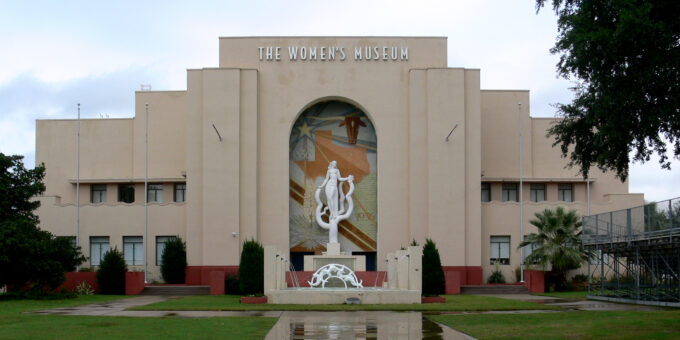
Dallas is a city rich in culture and history, and its museums are a testament to this vibrant heritage. While many visitors flock to the well-known exhibits, there are hidden gems within these museums that are often overlooked. In this post, we’ll explore these lesser-known treasures, take you behind the scenes of some of Dallas’s most prestigious museums, and offer advanced insights into the art of curating these fascinating collections.
The Hidden Gems of Dallas Museums
Dallas boasts a plethora of museums, each with its unique offerings. However, some of the most intriguing exhibits are not the most obvious. For instance, the Dallas Museum of Art (DMA) is widely known for its extensive collection of European art, but tucked away in its galleries are rare pieces from ancient civilizations that tell a story of a bygone era. The African Art collection, for example, is a stunning array of sculptures, textiles, and ceremonial objects that offer a deep dive into African culture, yet many visitors pass it by in favor of more prominent exhibits.
Another gem is the Crow Museum of Asian Art. While it might not have the same name recognition as some of Dallas’s larger institutions, its collection of Asian art is both exquisite and expansive. The museum’s jade collection, which spans thousands of years, is one of the most comprehensive in the world. Each piece has a story, reflecting the craftsmanship and cultural significance of jade in Asian history.
At the Perot Museum of Nature and Science, beyond the popular dinosaur skeletons and interactive science exhibits, lies a hidden treasure in the form of the Gems and Minerals Hall. This often-overlooked section features an incredible array of dazzling minerals, including one of the largest gold nuggets ever discovered in Texas. The hall is a mesmerizing journey through the natural beauty and complexity of the earth’s geological wonders.
A Behind-the-Scenes Look at Dallas Museums
While visitors enjoy the finished displays, there’s an entire world behind the scenes that brings these exhibits to life. At the DMA, for example, the process of curating an exhibit involves meticulous planning, research, and collaboration. Curators work closely with historians, artists, and conservators to ensure that each piece is presented in a way that not only highlights its beauty but also its historical and cultural context. The museum’s conservation lab, which is not open to the public, is where priceless works of art are carefully restored and preserved, often using cutting-edge technology.
Similarly, the Perot Museum offers behind-the-scenes tours that allow visitors to see how their exhibits are created. These tours provide an exclusive look at the museum’s state-of-the-art labs, where paleontologists study fossils and prepare specimens for display. It’s a fascinating glimpse into the scientific process and the dedication it takes to bring the wonders of the natural world to the public.
The Nasher Sculpture Center, renowned for its stunning collection of modern and contemporary sculpture, also offers behind-the-scenes experiences that showcase the intricate process of installing large-scale works of art. The precision and care required to move and place these sculptures are astounding, and these tours give a rare insight into the challenges faced by museum staff.
Advanced Insights into Museum Curation
The art of museum curation goes far beyond simply displaying objects. It involves telling a story and creating a narrative that engages the visitor on multiple levels. In Dallas, museum curators are pushing the boundaries of traditional curation to create more interactive and immersive experiences.
At the Dallas Holocaust and Human Rights Museum, curators have designed exhibits that not only educate but also evoke strong emotional responses. The museum’s use of multimedia, personal testimonies, and interactive displays allows visitors to connect with the subject matter in a deeply personal way. This approach is part of a growing trend in museum curation that seeks to make history not just something to be observed, but something to be felt and understood on a human level.
Another example of advanced curation can be found at the Meadows Museum, which houses one of the largest collections of Spanish art outside of Spain. The museum’s curators have developed a rotating series of exhibitions that delve into specific themes within Spanish art, such as the influence of the Spanish Golden Age on modern art. These thematic exhibits are supported by lectures, educational programs, and even musical performances that enrich the visitor’s experience and deepen their understanding of the art on display.
Conclusion
Dallas’s museums are treasure troves of art, history, and science, offering much more than what meets the eye. By seeking out the hidden gems, taking advantage of behind-the-scenes tours, and gaining a deeper understanding of the curatorial process, visitors can enrich their experience and discover a new appreciation for these cultural institutions. Whether you’re a seasoned museum-goer or a curious first-time visitor, there’s always something new and exciting to explore in the museums of Dallas. So next time you visit, take a moment to look beyond the obvious and uncover the hidden stories that make these museums truly special.













Hi there! I just wish to give you a big thumbs up for your excellent information you have here on this
post. I’ll be returning to your blog for more soon.!
This article was both educational and enjoyable to read. It’s one of the best resources I’ve come across on sustainable travel. We talked about a similar topic on TravelForums. I’m excited to see more of your work—thank you!